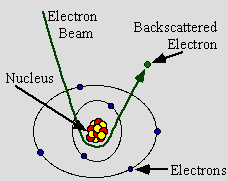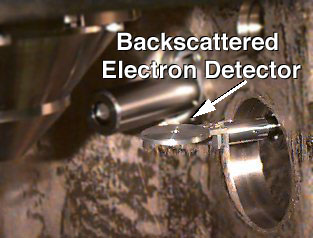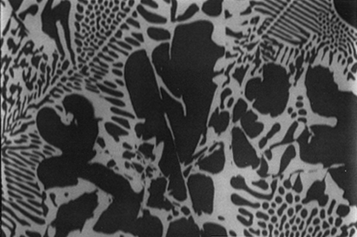Electron Signals
When an electron beam strikes a sample a large number of signals are generated. One possible signal could be from electrons. There are two types of electrons used to produce an image in a SEM, namely, secondary and backscattered electrons.
Backscattered Electrons
When the electron beam strikes the sample some of the electrons will interact with the nucleus of the atom in much the same way a space craft will interact with the gravity of a planet. The negatively-charged electron will be attracted to the positive nucleus but if the angle is just right instead of being captured by the “gravitational pull” of the nucleus it will circle the nucleus and come back out of the sample without slowing down. These electrons are called backscattered electrons because they come back out of the sample. Because they are moving so fast, they travel in straight lines. In order to form an image with BSE (backscattered electrons), a detector is placed in their path. When they hit the detector a signal is produced which is used to form the TV image. All the elements have different sized nuclei. As the size of the atom nucleus increases, the number of BSE increases. Thus, BSE can be used to get an image that showed the different elements present in a sample.

